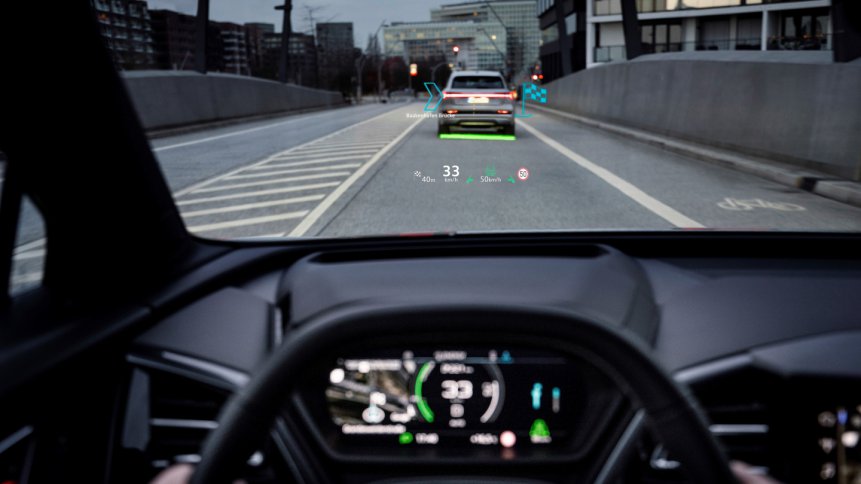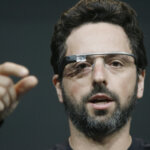Forward thinking on head-up displays

Today, you don’t need to jump into a Top Gun jet to experience a head-up display (HUD) – your next car may have one, as automakers roll out the technology across more models than ever before. In 2022, over 30 brands now offer HUD packages, some even providing the feature as standard. From Lamborghinis to Land Rovers, head-up displays – which project information such as vehicle speed and navigation details onto the windshield – are proving to be a popular display feature with drivers.
The kit has its origins in the aviation sector, where the display technology has been deployed for 50 years or more. Picture yourself piloting a jet through a canyon at 500 miles an hour plus, and it’s easy to imagine why having a display that lets you keep your eyes looking straight ahead, through the projected information and out of the cockpit, is a good thing. Early systems were based around cathode ray tubes, but modern head-up displays make use of LEDs, optical waveguides, and even scanning lasers to generate the necessary graphics and information output.
Safety first
Cars may be traveling at speeds somewhat slower than aircraft, but vehicles can still cover more than 30 meters per second on the motorway (when traffic allows). Taking your eyes off the road, even for a fraction of a second to look for navigation details or to make sure the vehicle is travelling below the speed limit, can mean that you’re slow car to notice a car breaking ahead and lose valuable reaction time. HUDs avoid this scenario by keeping all of the necessary data within the driver’s field of view and, to avoid refocusing, in the same focal plane as the road ahead.
Automotive suppliers include Bosch – which has provided solutions for BMW and Mini vehicles – and Continental, both headquartered in Germany. Continental is working on augmented reality HUDs that don’t just push key information in front of the driver, but place it in context. To give an example, the display will electronically mark the vehicle ahead to show the driver that it has been detected by the adaptive cruise control system.
Wearable display reboot?
The addition of augmented reality to automotive HUDs adds more value to the setup, making route markings more obvious and contextual to the driver; it could also open the door to some interesting business opportunities – virtual billboards being one that sprung to this writer’s mind. Automotive augmented reality might also reboot some enthusiasm for wearable see-through displays, which have failed in the past due to the lack of a ‘killer app’ and privacy concerns.
Thinking back to aviation, HUDs original market, it’s interesting to note the transition from head-up displays to head-mounted displays (HMDs) that visualize the aircraft’s principal instrumentation directly to the pilot’s eyes. Rather than just being able to see the flight data when staring straight ahead, the wearer can now access the information wherever they look. Modern fighter jets are equipped with both HUDs and HMDs, but the trend – based on the very latest designs – could be to rely solely on HMDs, which would save weight.
Wearable displays have other advantages too, which may appeal to drivers in particular. Currently, fixed HUDs are non-transferable from vehicle to vehicle, but a wearable solution would get around this issue. Motorcycling is another customer segment that may benefit, and, over the past decade, a number of providers have ventured into this territory. EyeLights, based in the southwest of France, and DIGILENS of California, US, are a couple of examples of companies with products on the market today.
BYOD
Another portable option is the smartphone. If your daily drive is lacking a HUD, fear not – there’s an app for that. Driving app specialist Sygic, based in Slovakia, has a HUD option that switches from normal to a mirror image view. Doing this means that the reflection, if bounced off the windshield by fixing the phone to the top of the dashboard, appears as a ‘heads-up’ view. Other developers have cottoned on to this too, so it’s worth checking your app store of choice for options.
Smartphones provide a handy way of road-testing HUD features, which could help to grow the wider market. And, if reviews are to be believed, head-up display navigation is a driving option that, once tried, you can’t live without.
Motoring on
Car designers are keen to declutter the cabin, and the introduction seen in recent years of wide, flat-panel dashboards that replace bulkier instrumentation clusters is part of this trend. HUD have the potential to take this a step further still, presenting drivers with the information they need, and no more, which can be viewed safely without taking their eyes off the road.
And should the wearable display reboot, pitched earlier in this article, take off then automobile interiors of the future could be sparser still with a virtual dashboard built into either one or both lenses.









